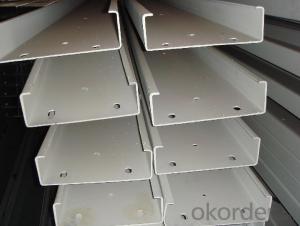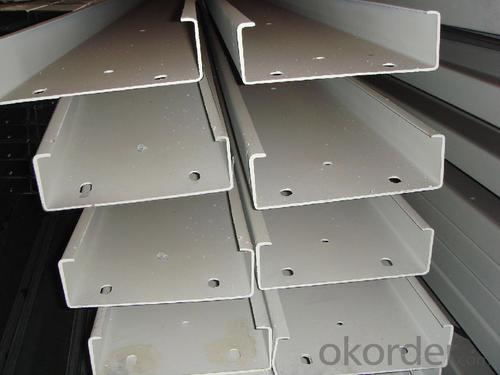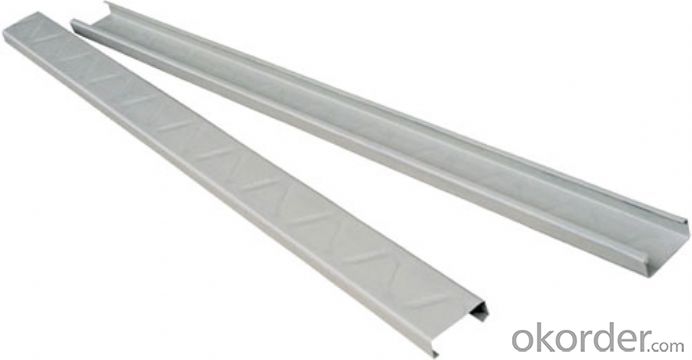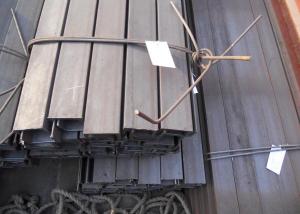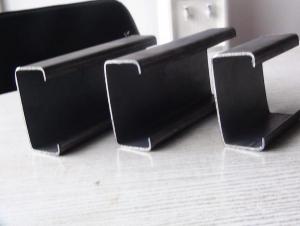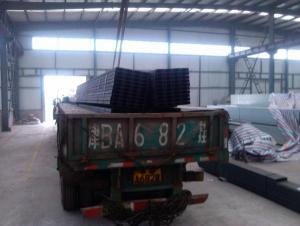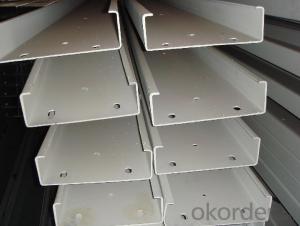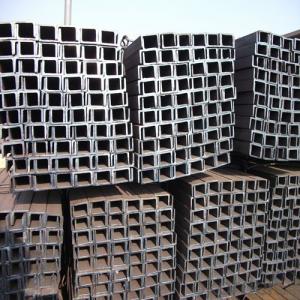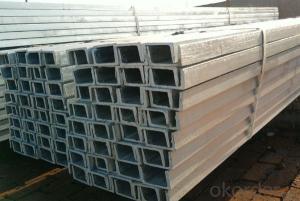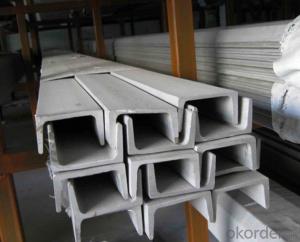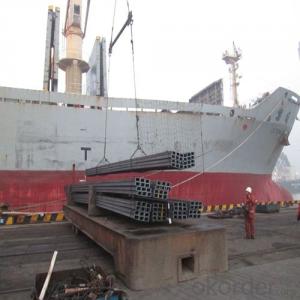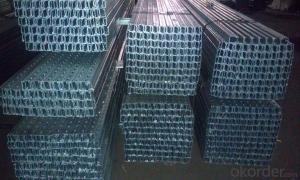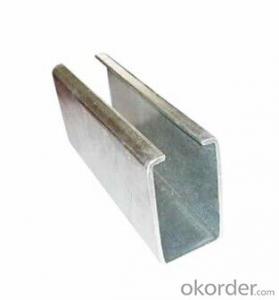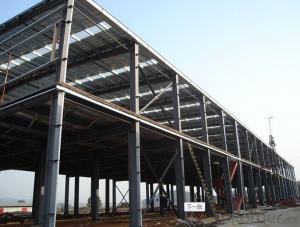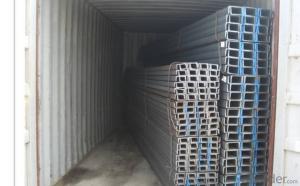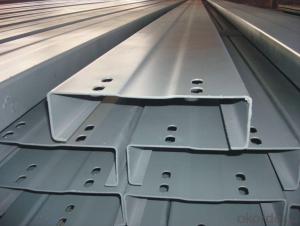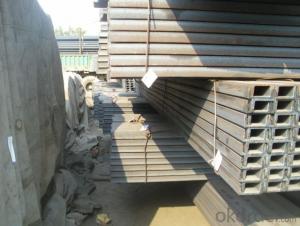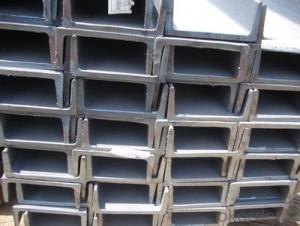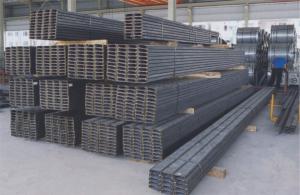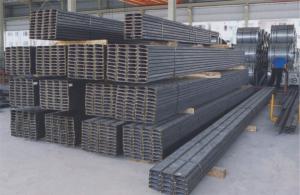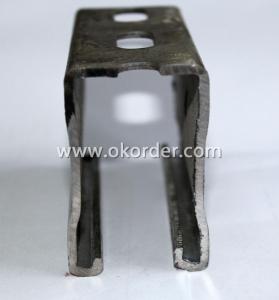C Steel Profile C Channel Manufacturer ,OEM Supplier,UL,NEMA Tested
- Loading Port:
- Tianjin
- Payment Terms:
- TT or LC
- Min Order Qty:
- 25 m.t.
- Supply Capability:
- 24000 m.t./month
OKorder Service Pledge
OKorder Financial Service
You Might Also Like
Product Description of C Steel Profile C Channel Manufacturer ,OEM Supplier,UL,NEMA Tested
C Steel Profile C Channel Manufacturer ,OEM Supplier,UL,NEMA Tested is a standardized formed structural system used in the construction and electrical industries for light structural support, often for supporting wiring, plumbing, or mechanical components such as air conditioning or ventilation systems.
Performance of C Steel Profile C Channel Manufacturer ,OEM Supplier,UL,NEMA Tested:
1.Convenient in construction and save much time and labor.
2.Light and cheap.
3.High mechanical strength.
4.Various kinds of fittings can make up of many combinations also for safety
5.Attractive in appearance.
6.Samples are free
strut channel :slotted or plai
C Channel
Solid channel has no holes predrilled, and must either be drilled on site or mounted in another fashion. Punched channel has round holes, large enough for 5/8 inch threaded steel rod or bolts, punched in the top of the channel at regular 1 7/8 inch centers. Half-slot channel has short, rounded end rectangular slots punched out on 2 inch centers. Slot channel has longer slots on 4 inch centers.
Standard: 41mmx41mm, 41mmX21mm, 41mmx61mm, 41mmX81mm
Wall thickness: 1.5mm, 1.6mm, 2.0mm, 2.5mm, 2.7mm (can produce based on your requirement).
Length:3m (can produce as your requirement)
Holes:28*14mm,18*9mm,13.5*63mm,11*25mm,11*30mm etc
Strut Channel Material :
Carbon steel or SS304 or SS316
Strut Channel Finishes :
Plain, Galvanized, Hot Dipped Galvanized, Polyester Powder Coated (other finishes available on request)
Parts of Our Products

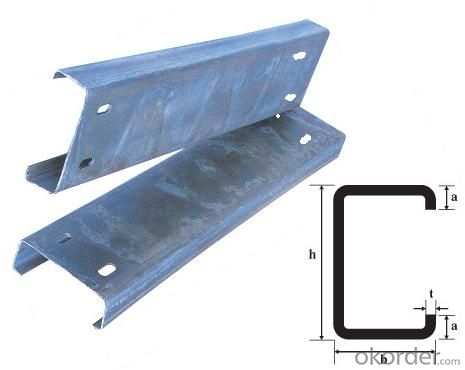
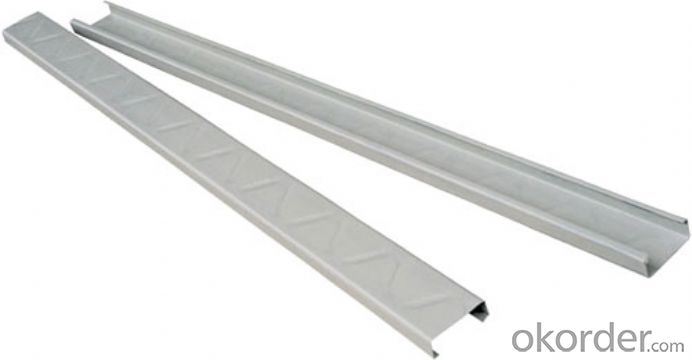
- Q: Are steel channels suitable for use in industrial settings?
- Yes, steel channels are highly suitable for use in industrial settings. Steel channels are versatile and robust structural components that provide excellent strength and stability, making them an ideal choice for various applications in industrial environments. One of the key advantages of steel channels is their high load-bearing capacity. Industrial settings often involve heavy machinery, equipment, and materials, which require strong and durable support structures. Steel channels can withstand significant loads and provide a reliable framework for various industrial operations. Moreover, steel channels are known for their resistance to corrosion and weathering. Industrial settings frequently expose materials to harsh conditions, such as moisture, chemicals, and extreme temperatures. Steel channels, especially those made from corrosion-resistant alloys, can withstand these environmental challenges and maintain their structural integrity over time. Another important factor that makes steel channels suitable for industrial settings is their versatility. Steel channels come in various shapes, sizes, and thicknesses, allowing them to be adapted to different requirements and applications. They can be easily fabricated, cut, and welded to create customized structures that meet specific industrial needs. Furthermore, steel channels offer excellent fire resistance, which is crucial in industrial environments where fire hazards are a concern. Steel has a high melting point and does not contribute to the spread of flames, making it a safe choice for industrial structures. In addition to their technical advantages, steel channels are also cost-effective in the long run. Steel is a durable material that requires minimal maintenance, reducing the need for frequent repairs or replacements. Moreover, steel is widely available and can be recycled, making it an environmentally friendly choice. In conclusion, steel channels are highly suitable for use in industrial settings due to their strength, durability, resistance to corrosion and fire, versatility, and cost-effectiveness. Whether it's for supporting heavy loads, creating customized structures, or withstanding harsh environments, steel channels offer reliable and efficient solutions for various industrial applications.
- Q: Can steel channels be used in the construction of architectural canopies?
- Indeed, architectural canopies can certainly incorporate steel channels into their construction. The utilization of steel channels in construction is widespread owing to their robustness and resilience. These channels offer essential structural reinforcement and stability, rendering them highly suitable for architectural canopies that must endure diverse weather conditions and burdens. Furthermore, steel channels can be skillfully fashioned and molded into various shapes to comply with the canopy's design prerequisites. Depending on the precise design and structural specifications, they can serve as either the primary framework component or as secondary supporting elements. All in all, due to their strength, adaptability, and capacity to enhance the structure's aesthetics, steel channels are widely favored for architectural canopy construction.
- Q: What direction does channel steel use best?
- There are N kinds of support: both ends of the simple support, both ends fixed, cantilever, one end of the cantilever, the other end of a simple support, cantilever at both ends
- Q: I unit of a shopping center construction project, 4.2 meters high, four floors.Because the first floor is adjacent to the building, the scaffold can not be erectedWe would like to use 20 channel three from 2 to 15 meters, ask how much channel spacing?
- Placement of the cantilever beam, welding rod base, since the corner in order to both sides of the bottom vertical pole, bottom and vertical sweeping bar buckle is fixed, installed in the horizontal sweep shot, and is fixed with a vertical rod, each side up 3--4 pole, then installed the first step (longitudinal flat bar and the vertical and lateral buckling) fixed flat bar (a small bar, near the pole and longitudinal vertical rod fastening fixed). To correct the vertical and horizontal lever of the upright pole to meet the requirements, tighten the fastening bolts according to the 45--55N & M force to form the initial section of the frame, and then extend forward in accordance with the above requirements until the first step of the rack is completed. After crossing the circle, the quality of the structure shall be thoroughly checked, and the design requirements and the quality of the frame shall be strictly ensured. The end wall parts shall be provided, and the second and third steps shall be erected according to the operation procedures and requirements of the first step...... In accordance with the erection process and the fashion set, the wall piece and the scissors support are provided with a work layer, a cross bar, a foot board and a work layer railing, a foot blocking board and a close mesh net.
- Q: Can steel channels be used for signage installations?
- Signage installations can indeed utilize steel channels. These channels offer a strong and enduring framework that supports and mounts signage. They are widely employed in outdoor signage installations, including billboards, roadside signs, and large-scale displays. Due to their exceptional structural integrity, steel channels can withstand diverse weather conditions, guaranteeing the stability and long life of the signage. Moreover, steel channels can be tailored and crafted to meet the precise requirements of the signage, enabling accurate installation and alignment. All in all, steel channels are a dependable and resilient option for signage installations.
- Q: Can steel channels be used for supporting walkways and platforms?
- Indeed, walkways and platforms can be supported by steel channels. In construction endeavors, steel channels are widely employed due to their robustness and endurance. These channels furnish a firm and steadfast support framework, rendering them optimal for walkway and platform support. They can be tailored to meet precise load demands and effortlessly assembled to forge a secure and trustworthy structure. Furthermore, steel channels can undergo galvanization or coating to enhance their resistance against corrosion, thereby guaranteeing their longevity and safety.
- Q: How do steel channels contribute to the overall stability of a bridge?
- The presence of steel channels is crucial in the construction of bridges, as they ensure the bridge's overall stability and structural integrity. These channels, also referred to as structural steel sections, make several essential contributions to the bridge's stability. The primary function of steel channels is to evenly distribute the load and weight of the bridge across its span. Acting as horizontal beams, they effectively transfer the loads from the bridge deck to the supporting piers or abutments. This load distribution prevents any concentration of stress in specific areas, ensuring that the bridge can withstand the forces it encounters, such as the weight of vehicles, wind, or seismic events. Furthermore, steel channels also play a role in maintaining the bridge's torsional stability. Torsional forces can arise from various factors, including uneven loading, wind gusts, or the distribution of the bridge's own weight. By strategically incorporating steel channels into the bridge's design, these sections resist torsional forces, preventing any twisting or warping of the structure. This ensures that the bridge remains stable and maintains its intended shape over time. Additionally, steel channels contribute to the stiffness and rigidity of the bridge. By connecting different structural elements, such as beams and columns, they provide an effective bracing system. This bracing prevents excessive deflection or bending of the bridge under loads, reducing the potential for deformation or failure. The added stiffness and rigidity offered by steel channels also help minimize the bridge's vibrations, providing a smoother and more comfortable experience for users. Moreover, steel channels offer versatility in design and installation. They can be fabricated into various shapes and sizes, allowing engineers to customize the bridge's structural components to meet the specific project requirements. This adaptability facilitates the optimization of the bridge's stability, enabling it to withstand different loads and environmental conditions. In conclusion, steel channels play a vital role in ensuring the overall stability of bridges. They contribute to load distribution, torsional stability, stiffness, and rigidity, allowing the bridge to safely support traffic loads and withstand external forces. The versatility of steel channels also allows engineers to create efficient and optimized bridge designs, enhancing the structural integrity and longevity of these essential infrastructural elements.
- Q: How are steel channels manufactured?
- Steel channels are manufactured through a process called hot-rolling, which involves heating a steel billet and passing it through a series of rollers to shape it into a channel. This process ensures the channels have consistent dimensions and strength.
- Q: Can steel channels be used in the construction of solar panel mounting structures?
- Yes, steel channels can be used in the construction of solar panel mounting structures. Steel channels provide strong support and stability, making them suitable for holding the weight of solar panels and withstanding various environmental conditions.
- Q: What are the factors to consider when selecting steel channels for a project?
- When selecting steel channels for a project, there are several important factors to consider. First, it is crucial to determine the specific load requirements of the project. This includes considering the weight that the steel channels will need to support and the stress or pressure they will be subjected to. Next, the dimensions and sizes of the steel channels should be evaluated. This involves assessing the height, width, and thickness of the channels to ensure they are suitable for the intended application and can provide the necessary structural support. The material grade of the steel channels is another vital factor. Different steel grades offer varying levels of strength, durability, and corrosion resistance. It is important to select a grade that aligns with the environmental conditions and longevity requirements of the project. Furthermore, the fabrication and installation process should be considered. Factors such as ease of welding, cutting, and forming the steel channels can impact the overall efficiency and cost-effectiveness of the project. Lastly, factors like cost, availability, and supplier reputation should also be taken into account. It is essential to source the steel channels from reliable and reputable suppliers who can provide high-quality products within the project's budget.
Send your message to us
C Steel Profile C Channel Manufacturer ,OEM Supplier,UL,NEMA Tested
- Loading Port:
- Tianjin
- Payment Terms:
- TT or LC
- Min Order Qty:
- 25 m.t.
- Supply Capability:
- 24000 m.t./month
OKorder Service Pledge
OKorder Financial Service
Similar products
Hot products
Hot Searches
Related keywords
